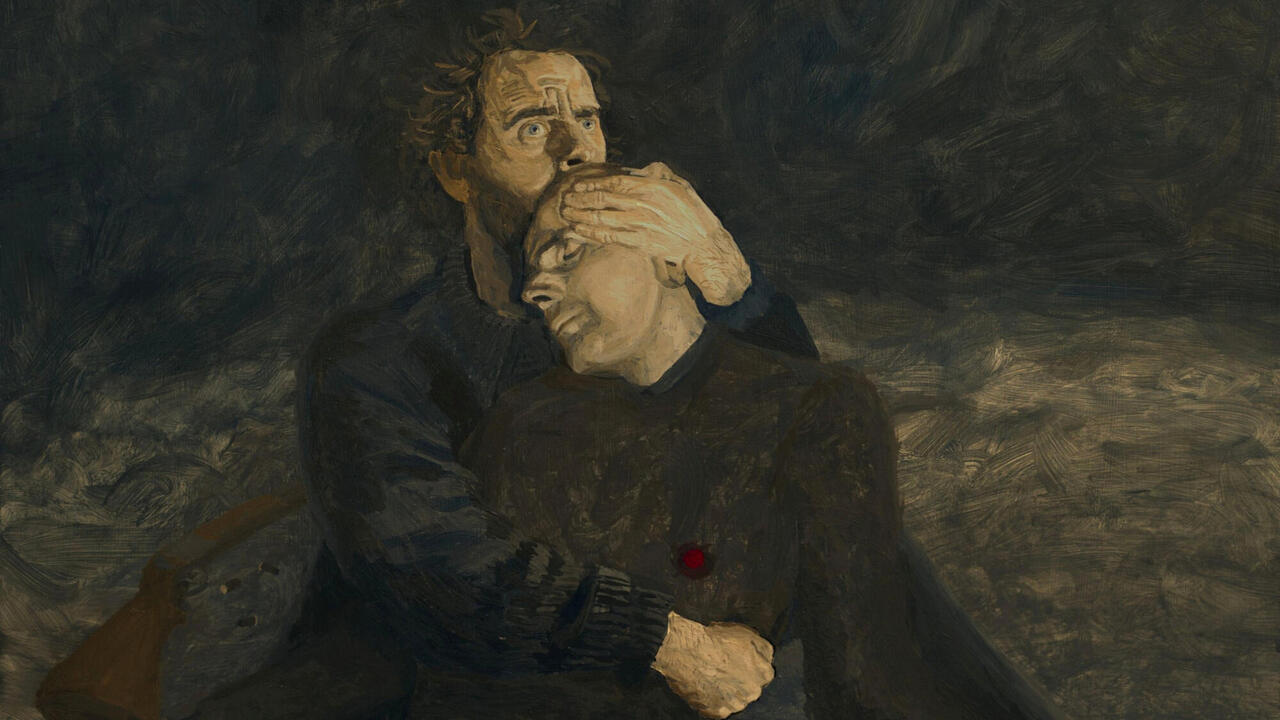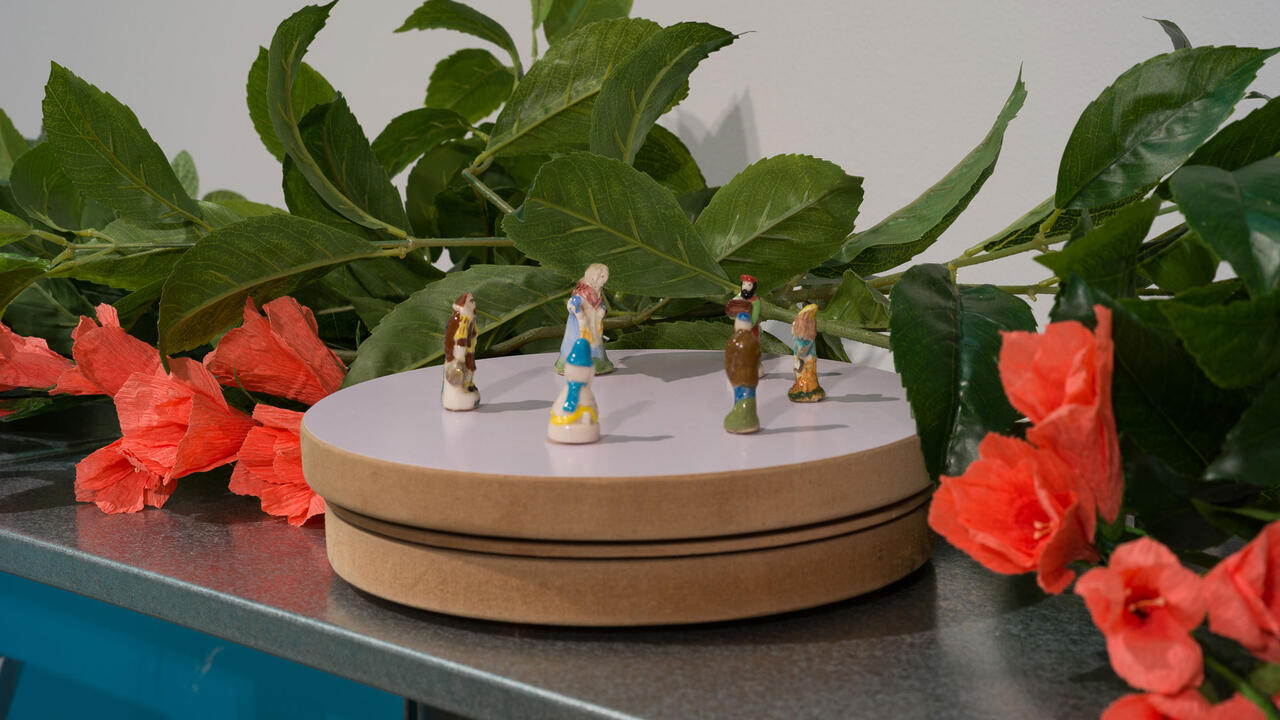Astrid Svangren

The eight uneasy sculptures that made up Astrid Svangren’s show at Maria Stenfors all share the same title, a short poem: ‘A longing for the bestowed / Towards or through it / Crushed / Absolutely nonexistent / Flickering uncontrollably / To be able to move again / As if the sun turned pain golden.’ Like their umbrella title, the works totter between wistful melodrama and sterner edges, quietly contradicting and stumbling over themselves. Each piece is discrete, though hardly discreet: there was a flirty coyness about the installation, as if Svangren’s sculptures couldn’t decide as to whether they were there to function as veils hiding the spaces behind them or to flaunt their own decorative intricacies. On entering, a white screen (all works 2012) blocked most of the gallery’s floor from view. All that was visible were several bright yellow, copper and gold lengths of cloth, which poured down from the ceiling. The majority of the works were made from cloth and light paper, mottled and stitched together erratically. A brightly coloured yellow silk sheet, doubled over with unevenly painted tissue hung in mid-air, darker patches of pigment and the occasional daub of glitter billowing as you walked past. Nearby, paper covered in gold paint appeared like some smooth foil, quilted together with red cloth and white cotton spilling onto the floor.
It was only in the centre of the room that it became possible to see what had been withheld from view: two flat rectangles, one a reflective steel-like Perspex covered in torn cello tape, the other a dark translucent blue, each on separate sides of the room resting on the floor and wall. The darker one had a cloth hung casually over its top corner, its front covered in smears and squiggles of red, purple and turquoise paint that looked like a young child’s attempt to draw a garden. Peeking in behind the piece, the light from the windows shone through the built-up paint to make a small, stained-glass effect on the wall.
This contrast of the heavy and dark against the light and airy works perhaps overemphasizes the polarities in Svangren’s practice: she isn’t afraid of being tacky – the reflective Perspex was propped up by a painted sheep’s skin, while glitter and shiny spraypaint clotted the delicate weaves of the materials with a Technicolour lustre. But this dainty exhibitionist streak was countered by the extreme – I could almost say ‘intimacy’, but that implies sharing – privacy of the work. Several of the pieces sat uncomfortably close to each other, as if trying to quieten their own doubts by huddling together. While you try to untangle the dense layers of colour in every work, this uneven pacing maintained a degree of suspense.
In these folding textures, there are more than just drifting similarities to the work of Karla Black (shown at Modern Art, London, a month before) and the concurrent Alice Channer exhibition at South London Gallery. But where Channer makes a bodily metonymy with the architecture from which her work hangs, and where Black herself denies the femininity of her materials, Svangren’s works are more independent of their surroundings while being more unabashedly gendered: rather than being explicitly feminine these works seem more confidently androgynous. It’s an odd sort of fractured boudoir she creates between the works – a sort of kitschy Baroque space fraught with tensions.
In her autobiographical essay ‘Savoir’, from the two-part book Veils (2002) written with Jacques Derrida, Hélène Cixous wrote of her life before the surgery that corrected her myopia: ‘She had been born with the veil in her eye […] She and Doubt were always inseparable: had things gone away or else was it she who mis-saw them? She never saw safely. Seeing was a tottering believing. Everything was perhaps.’ In the end, Cixous mourns the loss of her blindness, and it is this paradoxical will towards uncertainty (and the performance of that will) that seems shared in Svangren’s work. Like Cixous’ wish to return to ‘the secret non-seeing’, Svangren creates and undermines her own extravagantly hidden space.














